12 Perennial Vegetables That Grow Back Year After Year
Updated: Feb. 09, 2024
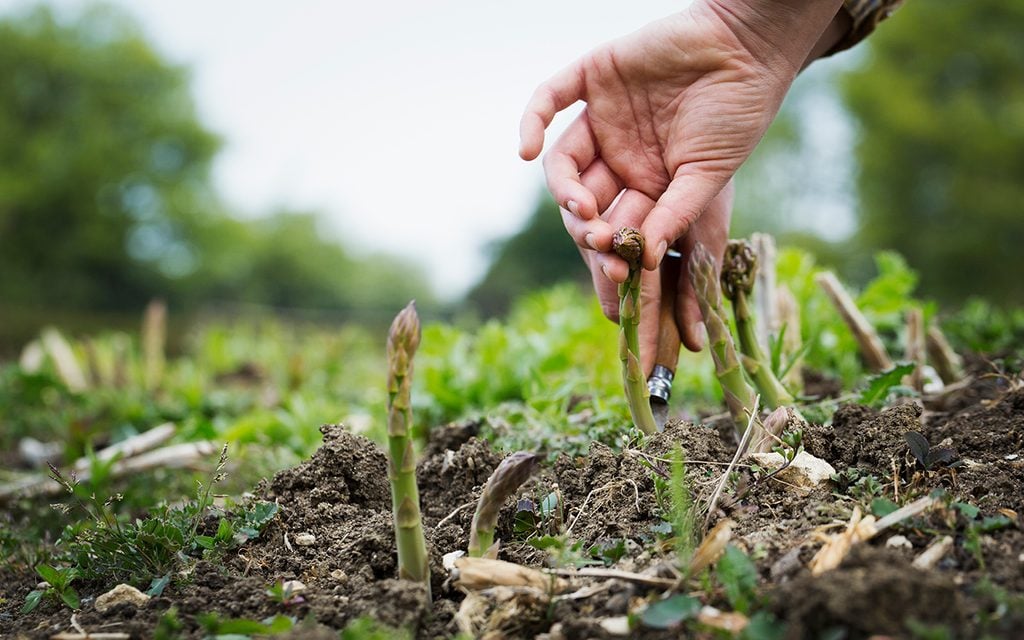
With all the seed buying and gardening that happens in spring, people forget that there are perennial vegetables that grow back on their own. Here are the vegetables you can plant once and enjoy year after year!
Our editors and experts handpick every product we feature. We may earn a commission from your purchases.
Part of the gardener’s spring ritual is ordering seeds or buying starts of favorite vegetables like tomatoes, peppers and cucumbers. But did you know that there are perennial vegetables that you can plant once and enjoy for years to come?
Asparagus
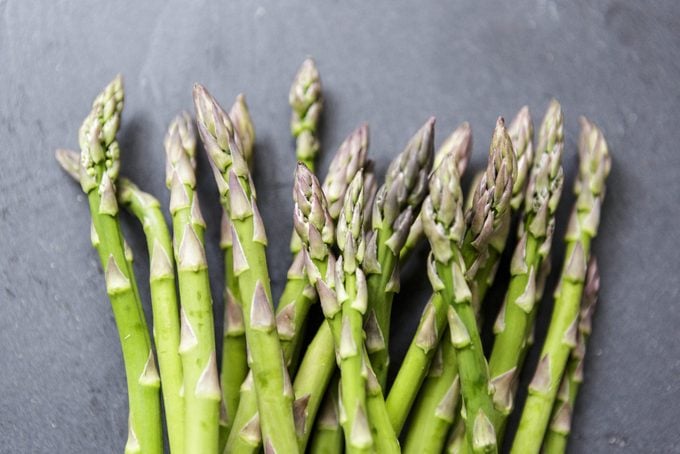
Asparagus recipe lovers can’t wait to see those stalks begin to emerge from the soil in spring. This is a relatively easy perennial vegetable to grow—the only hard part is that you have to wait one to two years before harvesting the first spears. Asparagus grows as a perennial in Zones 3-10 and can live for 15 years or longer.
Gardeners have more success planting live crowns over starting from seed, and all-male hybrids will produce the most stalks. Plant asparagus crowns in a full-sun spot and keep the soil weed-free and well-watered.
Editor’s Tip: Not sure what the growing zone for your area is? Also known as Plant Hardiness Zones, this map from the U.S. Department of Agriculture will show you.
Ramps
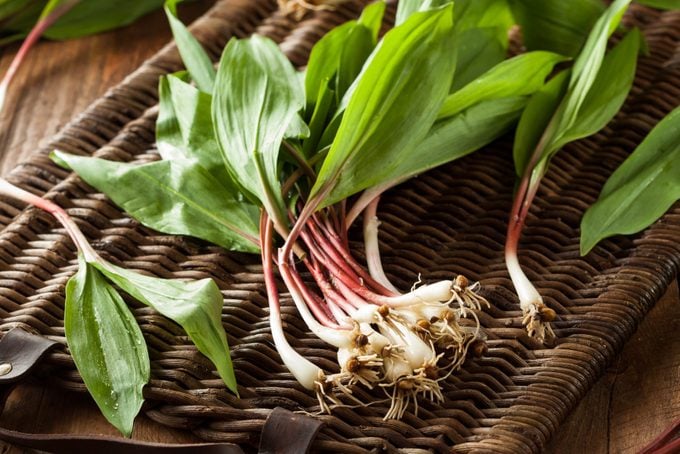
Also known as wild leeks or wild garlic, ramps have a mild onion flavor that’s delicious when raw and used in several recipes (like salads or even sauteed as a side dish). They’re foraged from woodlands, but you can add them to your own woodsy landscape, too. Ramps are hardy in Zones 3-7. They’re very slow-growing so they require patience: buy ramp bulbs for the fastest results, knowing that it’ll still be a few years before they’ll be ready to harvest. Plant the perennials in wooded areas with well-draining, damp soil, and leaf litter to protect the plants. Ramps appear for just a few weeks in early spring, then die back until the next year.
Be sure to plant your ramps away from False hellebore (Veratrum) and Lily of the Valley, two toxic, look-alike plants that can easily be mistaken for ramps.
Rhubarb
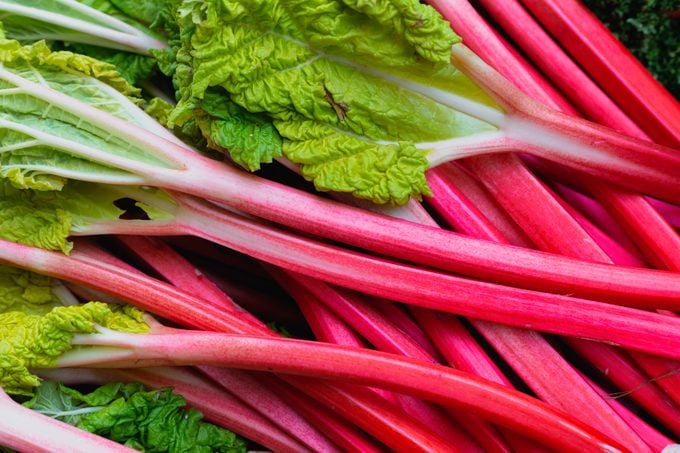
Another sure sign of spring is when everyone starts talking about their rhubarb. It’s a terrific choice for your garden or landscape: green and crimson-blushed stalks with large, broad leaves. In growing Zones 3-8, it’s a tough and hardy plant that comes back for decades. Only the stalks are edible (discard the poisonous leaves). The tart flavor of rhubarb is a perfect foil to sweet ingredients in recipes like rhubarb pie, crumbles, sorbets and old-fashioned drinks called shrubs.
To plant rhubarb order roots or ask a neighbor for a division of one of their plants. Plant rhubarb in a full-sun, well-drained spot.
Fiddleheads
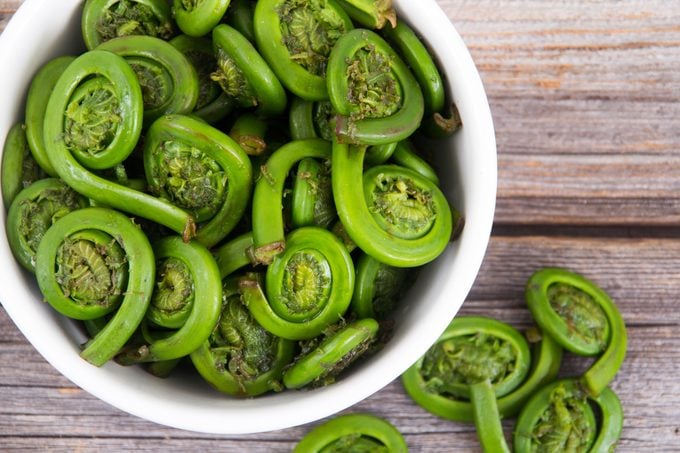
One of the most exciting sights of springtime farmers markets are fiddleheads, the bright green, tightly-curled tips of ferns that have an asparagus-like flavor when cooked or pickled. If your property includes shady areas or woods, with moist soil like that found near brooks and streams, you can grow your own fiddleheads from perennial ostrich ferns. They’re hardy in Zones 2-7 and happy plants will spread easily.
Order live ostrich fern starts and plant them in well-draining, slightly acidic soil. The plants grow up to three feet tall. Harvest fiddleheads when they emerge in early spring, and saute or pickle them for simple recipes like salads or sides to other spring recipes.
Onions
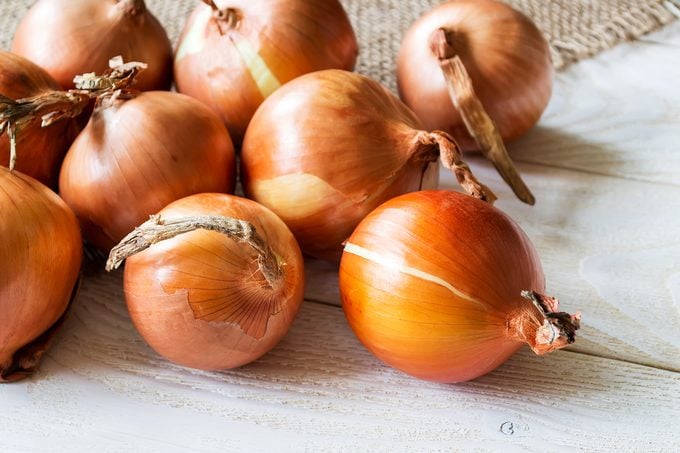
Not all onions can be part of a perennial garden, but there are a few easy-to-grow types that you can consider. Bunching onions, better known as scallions or green onions, are hardy in Zones 5-9, and they’re fast-growing, too. Different cultivars produce smaller or larger onions. Enjoy them throughout the growing season in stir-fries, salads or diced to make savory pancakes. Leave some in the garden to regrow next year. Other perennial onions to try are shallots (Zones 4-10) and Egyptian walking onions (Zones 3-9.)
Horseradish
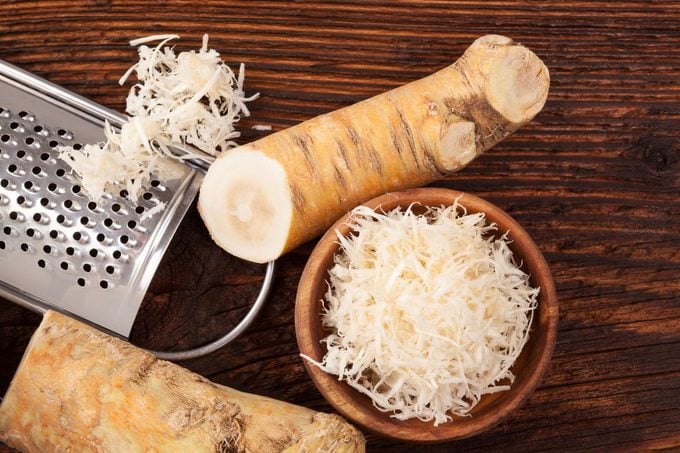
The taste of freshly grated horseradish root is so intense and flavorful—once you taste it you’ll never go back to the bottled stuff again. Fortunately, it’s easy to grow at home, suitable for growing Zones 3-9. Plant horseradish roots early in the spring in a sunny location with room for the roots to spread. The plant grows to about 18 inches in height with tall, curly-edged leaves. The roots can be harvested in the fall and early winter.
Jerusalem Artichokes
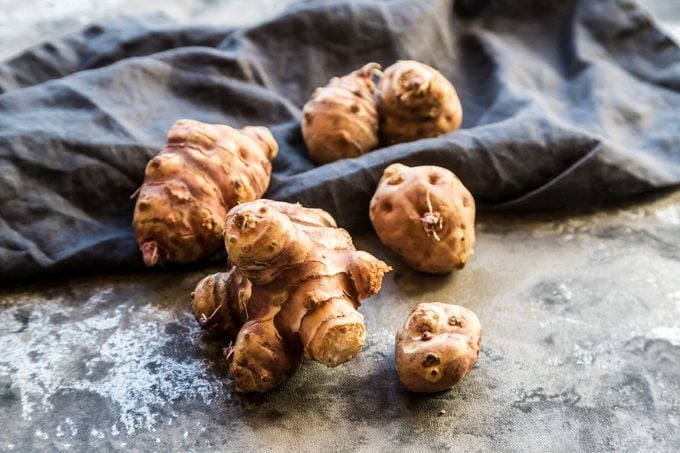
Also known as sunchokes, Jerusalem artichokes have become a more popular vegetable in recent years. The plant reaches an impressive height of 6-10 feet, with stalks topped with pretty yellow flowers. What they’re grown for are the roots, which look similar to knobs of ginger root. The artichoke roots can be poached, roasted, fried or eaten raw. Eating too many Jerusalem artichokes can cause stomach discomfort, so go slow if you’re new to this vegetable.
Plant Jerusalem artichokes in Zones 3-8 in a well-drained, sunny spot with plenty of room for the tall plants.
Garlic

Many think of garlic as an annual because gardeners tend to harvest their entire crop of bulbs, and then plant new ones for the next year. However, gardeners who get in the habit of leaving a portion of their bulbs in the ground are rewarded with garlic that comes back every year. This involves harvesting garlic from larger plants while letting smaller plants die back and stay in the ground.
Garlic generally falls into two categories: softneck which does better in warmer areas and hardneck which grows well in colder climates. Hardneck garlic plants also produce garlic scapes—the long, curling stems that can be snipped off and enjoyed for their mild onion-garlic flavor.
Radicchio
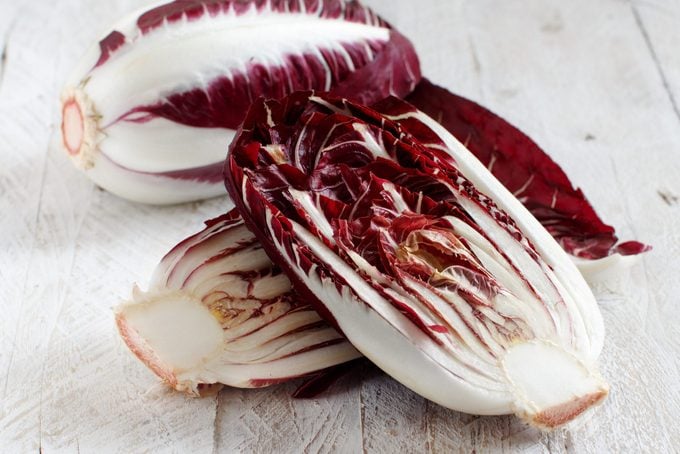
Radicchio is a type of chicory with beautiful red and white leaves that grow in a head, much like cabbage. Radicchio leaves have a strong and slightly bitter flavor; use it in salads or add it chopped to pasta dishes and stews. Plant radicchio in a spot that gets morning sun and afternoon shade. This vegetable is hardy in Zones 3-8.
Lovage
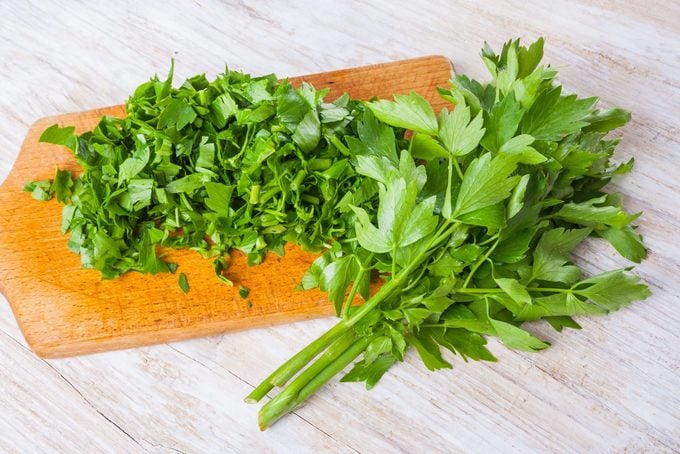
Lovage is an herb/vegetable that has been used since Greek and Roman times for culinary and medicinal purposes. This plant is hardy when grown in Zones 4-8, and can grow up to six feet tall. It prefers partial shade and well-drained, well-watered soil.
All parts of lovage are edible: seeds, flowers, leaves, stalk and roots. Lovage has a strong celery-like flavor, with some parts tasting like a cross between celery and parsley. The leaves can be added to salads and other recipes where you would normally use parsley. The stalks can be chopped and added to soups and stews.
Sorrel
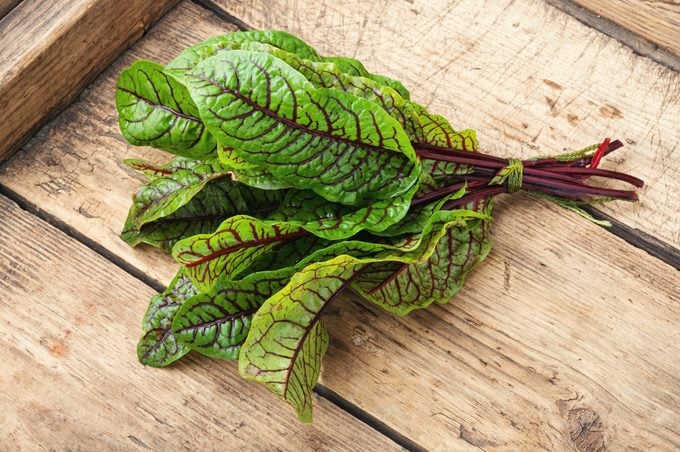
Sorrel leaves are perennial greens with a tart and lemony flavor, and they’re a great addition to salads and sandwiches. This attractive and edible plant has long leaves that grow upright to a height of about 12 inches. Sorrel grows well in Zones 5-9 in a full-sun location—although on very hot days it will also benefit from a little shade. You can grow sorrel from seed, or by dividing older plants.
Herbs
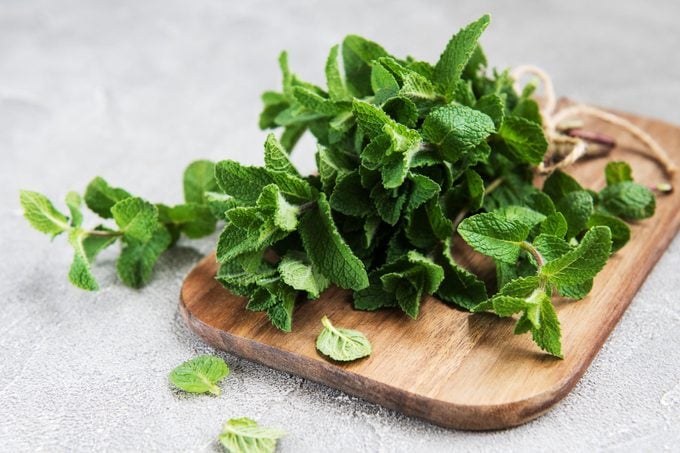
Though some kitchen herbs are annuals, there are many that will easily regrow year after year and deserve to be part of the perennial vegetables list. Some of these herbs include chives, mint, lemon balm, oregano, sage and thyme. Planting your herbs in well-drained soil and full-sun locations will help ensure they make a comeback. Also, these herbs should be planted in the ground—plants in containers generally won’t survive winter’s hard freeze.
